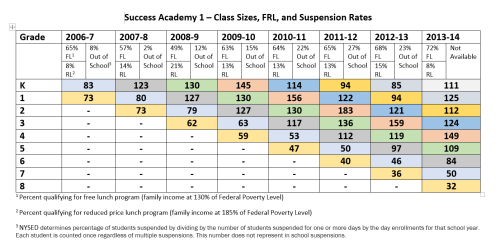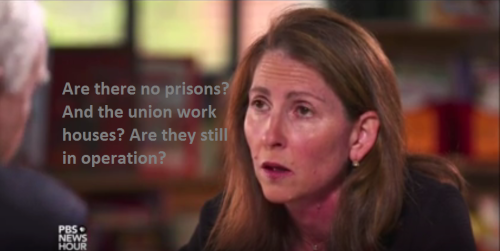It is easy when writing a blog to get caught up in negativity. In a strange way, it can be a form of fun. You sharpen your instincts for sarcasm while deploying your skills skewering policies and people actively causing harm to a topic near and dear to your heart. In today’s public education battles, with billions of dollars being deployed to reshape one of our core democratic institutions without the public’s input, it is almost always easier to state what I am against than what I am for. Sometimes that is intensely necessary as getting past catchy slogans and plans not backed with research requires taking claims apart with deliberation and focus. But it is not enough. It fails to highlight the real good being done by pro-public education activists every day.
So I’d like to take this appropriate time of the year to consider for what and for whom I am thankful in addition to my family, my friends, and my community. Every single group or event for which I am thankful has made significant strides to keep public education public and mindful of its core missions in an age when powerful forces are trying to bend it away from them without bothering to convince the public.
I am thankful for the Opt Out movement. I am not against the prudent use of very limited and minimally disruptive standardized testing for very limited purposes. We have gotten far from that in the age of test-based accountability, and the real consequences for the quality of education are well known. Despite the evident dangers of test-based accountability, the federal government and the states, spurred by intense lobbying by private foundations, actually made the situation worse since the 2008 election, making teachers’ livelihoods tied to statistical uses of standardized test data that is not even supported by the American Statistical Association.
Parents, after watching a decade of standardized testing slowly taking over every aspect of education, are finally saying “enough” and demanding that education regain its sanity. They are tired of being ignored and rolled over. They are tired of being told the schools they cherish are failures. They are tired of seeing test preparation pushing aside genuine learning. They have been insulted by the Secretary of Education as spoiled complainers. They’ve been implicitly called union pawns and openly compared to anti-vaxxers by the powerful Chancellor of the New York Board of Regents. They’ve been threatened if their districts don’t somehow manage to convince and/or force them to test their children.
And it hasn’t deterred them one iota. 20% of New York state’s eligible children refused the state standardized tests in 2015, and there is little to suggest that number will go down. The message is being heard broadly. President Obama dedicated time to voice concern about over-testing, although the substance of his actual remarks was not impressive. More impressive? A report in The New York Times indicating that Governor Andrew Cuomo may be on the verge of throwing in the towel on test based evaluations of New York’s teachers. This is the same governor who a year ago declared that the evaluation system he had pushed for himself was “baloney” and declared his intention to make student test scores 50% of teacher evaluations – which he got through the state budget process.
For Governor Cuomo to be considering, as reported by Kate Taylor of The Times, reducing the role of testing in teacher evaluation – and even contemplating removing it altogether – is tremendous. It is not merely blinking; it is a flat out collapse, and I suspect the governor’s allies at Students First and other reform outfits will be howling their protests soon enough. But for now, this development can be entirely chalked up to Opt Out’s relentless focus and refusal to fold under pressure. Of course, history shows that Cuomo cannot be trusted, and he is probably calculating that if he can mollify suburban voters by relieving some of the testing frenzy, then he and his allies can regroup and focus upon taking away local control from urban districts and converting as many of their schools into charters as possible. In fact, Michael Petrilli of the Thomas B. Fordham Institute already laid out this strategy in 2014 – saying that reformers had overplayed their hands by saying that even suburban public schools were failures and should instead focus as much as possible on getting no-excuses charter schools into place in urban school systems on the false premise that the test prep factories really represent “excellence”.
So the challenge for Opt Out in the future will be to recognize the progress it has made and to keep fighting so that all children are given schools freed from testing mania and full of enriching and empowering curricula. I think they can do it.
I am thankful for the Badass Teachers. True grassroots movements are incredible to watch. They are the result of hard work and organizing, usually spreading because a small group of people kept talking to others until a large group is formed around common principles. It cannot be faked. It cannot be bought with foundation money buying splashy web pages and getting “commitment” in return for funding. It is born out of genuine, lived, passions.
That’s the Badass Teachers Association, or BATs, in a nutshell. This organization of classroom teachers and allies was born out of teachers who were increasingly frustrated by the efforts of reformers to blame them for all of the problems that land in school but for which society at large accepts no responsibility. In short order, it has grown to tens of 1000s of members across the country, and it is a vibrant presence in social media and, increasingly, the wider public discourse on our national educational commons.
And they have had an amazing impact already, influencing both national union leaders and legislation in our nation’s capitol. Because they are a true grassroots organization, BATs leadership and BAT members are in constant and close proximity to each other, and real conversations about real teachers and classrooms are ongoing. That led to genuine concern over the number of teachers speaking about workplace stress increasing under current reforms, leading even to recent suicides. Members of the Badass Teachers contacted the American Federation of Teachers which led to direct conversations with AFT President Randi Weingarten. President Weingarten lent AFT assistance to the BATs in putting together a first of its kind teacher workplace survey which went live in April of this year. In a mere ten days, over 31 THOUSAND classroom teachers responded. The team of teachers who wrote the 80 question survey were told to expect maybe 1000 responses.
The initial results are available online here. On its own, such a survey highlighting the impacts of today’s education environment would be incredible, but the influence is much more far reaching. The survey results gave the AFT enough information to convince Senators Corey Booker of New Jersey and Michael Bennet of Colorado to author an amendment to Title II of the Elementary and Secondary Education Act legislation directing the federal DOE to examine workplace stress among teachers. In a conversation with me, President Weingarten of the AFT expressed her enthusiasm for the work the BATs group did. “This time the process was as important as the product,” she said, “Because the process empowered people.”
To witness the impacts of influence flowing up from the real grassroots – that is empowering and it is potentially very long lasting. I cannot wait to see what the BATs do in the upcoming years.
I am thankful for the Dyett Hunger Strikers. We live in a time when school privatizers have wrapped themselves in the language of the civil rights struggle and have claimed that their efforts to wrest control of our public schools away from democracy is a civil rights matter. Given the history of local and state control fighting integration and racial justice, it is not entirely surprising that they have allies among traditional civil rights organizations on matters like testing and accountability.
But the overall package has little to do with civil rights, and while suburban parent constituencies have been angered recently by the impacts of over testing and loss of local input into schooling, urban communities of color have been experiencing that loss of voice for years now. Dr. Denisha Jones of Howard University makes it very clear how school reform efforts aimed at privatization of public schools are not civil rights advances: privatization is unaccountable and refuses to serve all children as public schools do; school choice leads more to schools choosing the children they want rather than families choosing the schools they want; privatized schools employs huge percentages of novice teachers who they burn out and replace with more novices in short order – experienced teachers are, ironically, reserved for the fully public schools in suburban communities while privatized schools in urban communities get well intentioned do gooders with no experience. In school privatization, wealthy communities retain full control of their schools while poorer communities are given “choices” — but only those the more powerful deign to give them.
With that in mind, it was incredibly powerful when a group of parent and community activists in the Bronzeville neighborhood of Chicago did something astonishing. They went on a hunger strike to demand that the Chicago Public Schools and Mayor Rahm Emanuel listen to what the community had been advocating for and planning for over several years: a fully public, open enrollment high school with a green technology and global leadership focus that had been carefully planned for within the community. The strike continued for an agonizing 34 days during which Mayor Emanuel pettily refused to acknowledge the strikers but during which CPS gave ground in slow dribs and drabs. The strikers won not only the reopening of their community’s high school, but also the commitment that it will be an open enrollment, public school not handed over to an outside contractor. And while CPS would not commit to their specific plan, there will be elements of the green technology and global leadership focus in the school.
The strikers, however, did more than win some concessions on one school. They put a dramatic spotlight on the inequities of how “reform” plays out in impoverished communities in our country. While they were starving themselves for a fully public school, CPS, which had claimed budget woes in efforts to close 50 schools in predominantly African American and Hispanic neighborhoods, unveiled plans for multimillion dollar annexes in schools in predominantly white neighborhoods. Jitu Brown, a lifelong community activist in Chicago, made this discrepancy in education reform crystal clear:
“There’s a huge fight now that I hope this hunger strike has helped to energize and that is the fight for sustainable community schools not only in Chicago but around the country. You shouldn’t have cities like New Orleans where the largest base of African American home owners in the United States are labeled as refugees and their city is taken from them. They lose their county hospital. They lose their schools and now virtually every school in New Orleans is run by a private company that makes a profit off of administering what is supposedly a human right. Children in New Orleans have a perfectly good school across the street but they can’t go because they didn’t win the lottery to go.”
Mr. Brown’s fellow hunger striker, April Stogner, spoke on this with John Hockenberry of Public Radio International:
“When you talk about community, the community should be involved in the decisions, and we were not involved. We submitted this plan. We’ve been working on this plan for well over five years, so it’s funny that he said you’re doing what’s best for our community. You don’t know what’s best for our community, or we wouldn’t have had 49 schools closing at one time. Tell the truth and say what it is. They just want to make money off the backs of our children, and they feel like they can just come into our community and take what they want. But we’re not having that anymore.”
This was a fight that refused to cede the moral high ground to school reformers and put a clear spotlight on how little community voices matter to the people who claim to be acting on their behalf. The fight for Dyett High School was a powerful message that while the civil rights movement has made great strides using federal power for equality, that does not mean that school privatizers can claim that mantle by grabbing power from afar and then steamrolling communities. Mr. Brown went on to say:
“There is no group of people who is better than the others. We are different. You know, we have different cultures, but we all bring something…. and we should not stand for inequity. Because an inequitable school system an inequitable system denies us the joy of knowing each other. It denies us the joy of building a country together. Building a community together. Building a system together. And we have for too long – I mean our white brothers and sisters, but I mean as Americans period — we’ve ignored the racism that flows through this country, that feeds it like food. We’ve ignored it.”
In a time when one of the most important discussions we are having as a nation is the one prompted by the Black Lives Matter movement and its insistence that we face the systemic inequalities built upon racism permeating our society still, it is incredibly powerful for a community to rise up and insist that their SCHOOLS matter as well. It is absolutely shameful that people had to put their very bodies on the line for more than a month to make that message completely clear, but it is inspiring that they did so. I hope to hear much more from them in the coming years.
















